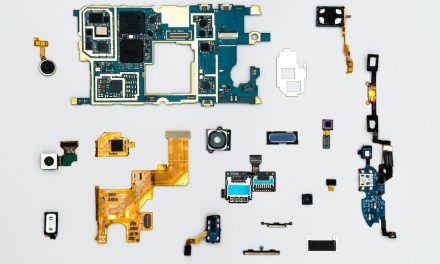Table of Contents
- Introduction
- The Role of Digital Twins in Enhancing Operational Efficiency
- Leveraging Digital Twins for Predictive Maintenance and Asset Optimization
- Exploring the Potential of Digital Twins in Product Development and Innovation
- Harnessing Digital Twins for Real-time Decision Making and Risk Mitigation
- Q&A
- Conclusion
Unlocking the Power of Digital Twins: Empowering Leaders in the Digital Age
Introduction
Digital twins technology is revolutionizing various industries by providing a virtual replica of physical assets, processes, or systems. This innovative approach allows leaders to gain valuable insights, optimize operations, and make informed decisions. Harnessing digital twins technology has significant implications for leaders, enabling them to enhance efficiency, improve productivity, and drive innovation. In this article, we will explore the potential benefits and challenges associated with digital twins technology and discuss how leaders can effectively leverage this technology to stay ahead in today’s rapidly evolving digital landscape.
The Role of Digital Twins in Enhancing Operational Efficiency

Digital twins technology has emerged as a powerful tool for enhancing operational efficiency in various industries. By creating virtual replicas of physical assets, processes, and systems, organizations can gain valuable insights, optimize performance, and make informed decisions. This article explores the role of digital twins in enhancing operational efficiency and the implications for leaders.
One of the key benefits of digital twins is their ability to provide real-time monitoring and analysis of assets and processes. By collecting data from sensors and other sources, digital twins can generate accurate and up-to-date information about the performance and condition of physical assets. This enables organizations to identify potential issues, predict failures, and take proactive measures to prevent downtime and optimize maintenance schedules.
Furthermore, digital twins can simulate different scenarios and predict the impact of changes or interventions. By running simulations, organizations can test various strategies, evaluate their effectiveness, and make data-driven decisions. For example, in manufacturing, digital twins can simulate production processes, identify bottlenecks, and optimize workflows to increase productivity and reduce costs.
Another way digital twins enhance operational efficiency is by enabling remote monitoring and control. With the increasing adoption of Internet of Things (IoT) devices, organizations can connect physical assets to their digital twins and monitor them remotely. This allows for real-time monitoring, predictive maintenance, and remote troubleshooting, reducing the need for on-site visits and minimizing downtime.
Digital twins also facilitate collaboration and knowledge sharing among different teams and departments. By providing a common platform for data sharing and analysis, digital twins enable cross-functional teams to work together, share insights, and make collective decisions. This promotes collaboration, improves communication, and enhances overall operational efficiency.
Moreover, digital twins can support the implementation of advanced analytics and artificial intelligence (AI) algorithms. By integrating digital twins with AI technologies, organizations can leverage machine learning and predictive analytics to gain deeper insights and make more accurate predictions. For example, in healthcare, digital twins can analyze patient data, identify patterns, and predict disease progression, enabling personalized treatment plans and better patient outcomes.
However, harnessing the full potential of digital twins requires strong leadership and a strategic approach. Leaders need to invest in the necessary infrastructure, technologies, and skills to implement and manage digital twins effectively. They also need to foster a culture of data-driven decision-making and encourage collaboration across different teams and departments.
Furthermore, leaders should ensure that data privacy and security measures are in place to protect sensitive information. As digital twins collect and analyze vast amounts of data, organizations need to establish robust cybersecurity protocols and comply with relevant regulations to safeguard data integrity and privacy.
In conclusion, digital twins technology offers significant opportunities for enhancing operational efficiency. By providing real-time monitoring, simulation capabilities, remote control, and collaboration tools, digital twins enable organizations to optimize performance, make informed decisions, and drive innovation. However, leaders must take a strategic approach and invest in the necessary infrastructure, skills, and security measures to harness the full potential of digital twins. By doing so, they can position their organizations for success in the digital age.
Leveraging Digital Twins for Predictive Maintenance and Asset Optimization
Digital twins technology has emerged as a powerful tool for organizations across various industries. One area where it has shown immense potential is in predictive maintenance and asset optimization. By creating virtual replicas of physical assets, organizations can gain valuable insights into their performance, identify potential issues before they occur, and optimize their maintenance strategies. This article explores the implications of harnessing digital twins technology in this context and highlights the benefits it offers to leaders.
Predictive maintenance is a critical aspect of asset management, as it allows organizations to minimize downtime, reduce costs, and improve overall operational efficiency. Traditionally, maintenance activities have been carried out based on fixed schedules or reactive approaches, leading to unnecessary downtime and increased expenses. However, with digital twins, organizations can move towards a more proactive and data-driven approach.
Digital twins enable real-time monitoring of assets, capturing a wealth of data on their performance, condition, and usage patterns. By analyzing this data, organizations can identify patterns and trends that indicate potential issues or failures. This allows them to take preventive measures, such as scheduling maintenance activities at the most opportune times or replacing components before they fail. As a result, organizations can avoid costly breakdowns, reduce maintenance costs, and extend the lifespan of their assets.
Furthermore, digital twins provide a platform for simulating different scenarios and testing various maintenance strategies. By creating virtual replicas of assets, organizations can simulate the impact of different maintenance interventions and optimize their strategies accordingly. For example, they can evaluate the effectiveness of different maintenance schedules, assess the impact of different maintenance techniques, or even simulate the consequences of delaying maintenance activities. This enables organizations to make informed decisions about their maintenance strategies, ensuring that they are cost-effective and aligned with their operational goals.
Another significant benefit of digital twins technology in asset optimization is the ability to optimize asset performance. By continuously monitoring assets and analyzing their data, organizations can identify opportunities for improvement and optimize their performance. For instance, they can identify energy inefficiencies, optimize production processes, or even identify opportunities for product innovation. This not only improves the overall efficiency of operations but also enhances the competitiveness of organizations in the market.
Moreover, digital twins enable organizations to leverage advanced analytics and machine learning algorithms to gain deeper insights into their assets. By combining data from multiple sources, such as sensors, maintenance records, and historical data, organizations can uncover hidden patterns and correlations that would be difficult to identify otherwise. This allows them to make more accurate predictions about asset performance, anticipate potential failures, and optimize their maintenance strategies accordingly.
In conclusion, digital twins technology offers significant implications for leaders in the context of predictive maintenance and asset optimization. By creating virtual replicas of physical assets, organizations can gain valuable insights into their performance, identify potential issues before they occur, and optimize their maintenance strategies. This enables organizations to move towards a more proactive and data-driven approach to maintenance, minimizing downtime, reducing costs, and improving overall operational efficiency. Furthermore, digital twins provide a platform for simulating different scenarios and testing various maintenance strategies, allowing organizations to make informed decisions about their maintenance strategies. Additionally, digital twins enable organizations to optimize asset performance by continuously monitoring assets, identifying opportunities for improvement, and leveraging advanced analytics and machine learning algorithms. Overall, harnessing digital twins technology in predictive maintenance and asset optimization can provide organizations with a competitive edge in today’s rapidly evolving business landscape.
Exploring the Potential of Digital Twins in Product Development and Innovation
Digital twins technology has emerged as a powerful tool in the realm of product development and innovation. This technology, which involves creating a virtual replica of a physical product or system, has the potential to revolutionize the way leaders approach the design and development process. By harnessing the power of digital twins, leaders can gain valuable insights, optimize performance, and drive innovation.
One of the key advantages of digital twins technology is its ability to provide real-time data and analytics. By creating a virtual replica of a product or system, leaders can monitor its performance and gather data on various parameters. This data can then be analyzed to identify areas for improvement and optimization. For example, if a digital twin of a manufacturing plant is created, leaders can monitor its energy consumption, production efficiency, and maintenance needs. This data can help identify bottlenecks, optimize processes, and reduce costs.
Furthermore, digital twins technology enables leaders to simulate different scenarios and test various design options. By creating a virtual replica of a product or system, leaders can experiment with different configurations, materials, and operating conditions. This allows them to identify the most optimal design and make informed decisions. For example, in the automotive industry, digital twins can be used to simulate the performance of different engine designs, test their fuel efficiency, and evaluate their emissions. This enables leaders to make data-driven decisions and develop more sustainable and efficient products.
In addition to optimizing performance, digital twins technology also facilitates innovation. By creating a virtual replica of a product or system, leaders can explore new ideas and concepts without the need for physical prototypes. This reduces the time and cost associated with traditional product development processes. For example, in the aerospace industry, digital twins can be used to simulate the performance of new aircraft designs, test their aerodynamics, and evaluate their structural integrity. This allows leaders to explore innovative designs and push the boundaries of what is possible.
However, harnessing the full potential of digital twins technology requires leaders to overcome certain challenges. One of the key challenges is data integration. Creating a digital twin requires gathering data from various sources, such as sensors, IoT devices, and existing systems. This data needs to be integrated and analyzed to create an accurate virtual replica. Leaders need to invest in robust data infrastructure and analytics capabilities to ensure the success of digital twins initiatives.
Another challenge is the need for interdisciplinary collaboration. Creating a digital twin requires expertise from various domains, such as engineering, data science, and design. Leaders need to foster a culture of collaboration and create cross-functional teams to effectively harness the potential of digital twins technology. This requires breaking down silos and promoting knowledge sharing and collaboration across different departments.
In conclusion, digital twins technology has the potential to revolutionize product development and innovation. By creating virtual replicas of products or systems, leaders can gain real-time data and analytics, simulate different scenarios, and drive innovation. However, harnessing the full potential of digital twins requires leaders to overcome challenges such as data integration and interdisciplinary collaboration. By investing in the right infrastructure and fostering a culture of collaboration, leaders can leverage digital twins technology to optimize performance, drive innovation, and gain a competitive edge in the market.
Harnessing Digital Twins for Real-time Decision Making and Risk Mitigation
Harnessing Digital Twins for Real-time Decision Making and Risk Mitigation
In today’s fast-paced and ever-changing business landscape, leaders are constantly seeking innovative solutions to gain a competitive edge. One such solution that has gained significant attention in recent years is the use of digital twins technology. Digital twins are virtual replicas of physical assets, processes, or systems that can be used to monitor, analyze, and optimize their real-world counterparts. This technology has the potential to revolutionize the way leaders make decisions and mitigate risks in real-time.
One of the key advantages of digital twins is their ability to provide real-time data and insights. Traditional decision-making processes often rely on historical data, which may not accurately reflect the current state of affairs. With digital twins, leaders can access up-to-date information about their assets or processes, enabling them to make more informed decisions. For example, a manufacturing plant can use a digital twin to monitor the performance of its machines in real-time, identifying potential issues before they escalate into costly breakdowns. This real-time visibility allows leaders to take proactive measures to mitigate risks and optimize performance.
Furthermore, digital twins can simulate various scenarios and predict outcomes, allowing leaders to assess the potential impact of their decisions before implementing them. This capability is particularly valuable in complex and high-stakes environments where even small changes can have far-reaching consequences. For instance, in the energy sector, digital twins can be used to simulate the effects of different weather conditions on power generation and distribution systems. By running these simulations, leaders can identify vulnerabilities and develop contingency plans to minimize disruptions and ensure business continuity.
Another significant implication of digital twins technology is its potential to enhance collaboration and communication among different stakeholders. In traditional decision-making processes, information is often siloed, making it difficult for leaders to gain a holistic view of the situation. Digital twins, on the other hand, provide a centralized platform where stakeholders can access and share real-time data, fostering collaboration and enabling more effective decision-making. For example, in the construction industry, digital twins can be used to coordinate activities between architects, engineers, and contractors, ensuring that everyone is working towards a common goal and minimizing the risk of errors or delays.
However, it is important to note that harnessing the full potential of digital twins requires leaders to invest in the necessary infrastructure and expertise. Implementing digital twins technology involves integrating various data sources, deploying sensors and IoT devices, and developing sophisticated analytics capabilities. Additionally, leaders need to ensure that their teams have the skills and knowledge to effectively interpret and act upon the insights provided by digital twins. Therefore, leaders must be willing to invest in training and development programs to equip their workforce with the necessary skills to leverage this technology effectively.
In conclusion, digital twins technology has the potential to revolutionize the way leaders make decisions and mitigate risks in real-time. By providing real-time data and insights, simulating scenarios, and enhancing collaboration, digital twins enable leaders to make more informed decisions, optimize performance, and minimize disruptions. However, harnessing the full potential of digital twins requires leaders to invest in the necessary infrastructure and expertise. As this technology continues to evolve, leaders who embrace digital twins will be better positioned to navigate the complexities of the modern business landscape and gain a competitive edge.
Q&A
1. What is digital twins technology?
Digital twins technology is a virtual representation of a physical object, process, or system that allows for real-time monitoring, analysis, and simulation.
2. How can digital twins technology be harnessed?
Digital twins technology can be harnessed by integrating it into various industries and sectors, such as manufacturing, healthcare, and infrastructure, to improve operational efficiency, optimize performance, and enable predictive maintenance.
3. What are the implications of digital twins technology for leaders?
Digital twins technology can provide leaders with valuable insights and data-driven decision-making capabilities, enabling them to make informed strategic choices, enhance productivity, and drive innovation.
4. What are the potential benefits of using digital twins technology?
The potential benefits of using digital twins technology include improved asset management, reduced downtime, increased safety, enhanced product development, and better customer experiences.
Conclusion
In conclusion, harnessing digital twins technology has significant implications for leaders. It offers opportunities for improved decision-making, enhanced operational efficiency, and increased innovation. Leaders can leverage digital twins to gain real-time insights, optimize processes, and simulate scenarios, leading to better outcomes and competitive advantage. However, successful implementation requires strong leadership, collaboration across teams, and a clear understanding of the technology’s capabilities and limitations. Overall, embracing digital twins can empower leaders to drive digital transformation and unlock new possibilities in various industries.




